Progressive Discipline Policy
-
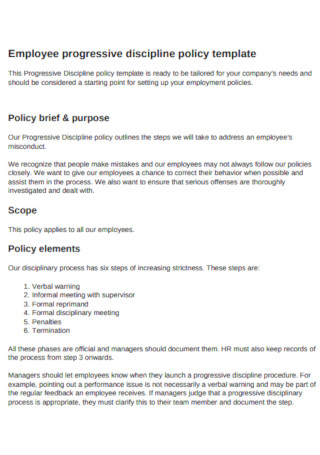
Employee Progressive Discipline Policy Template
download now -
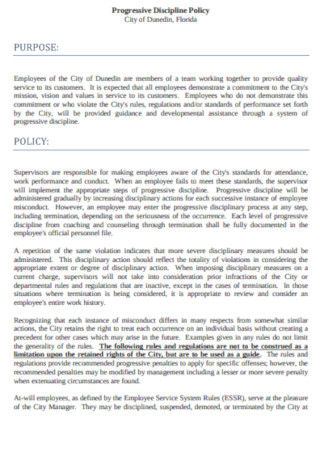
Purpose of Progressive Discipline Policy
download now -
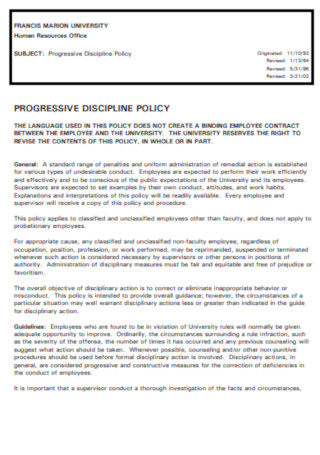
University Progressive Discipline Policy
download now -
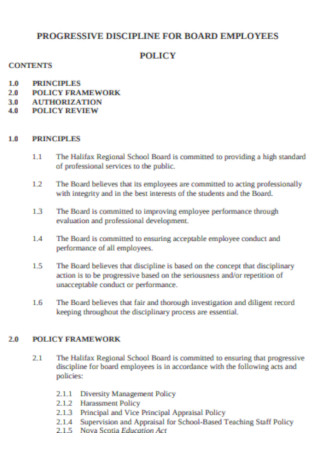
Progressive Discipline for Board Employee Policy
download now -
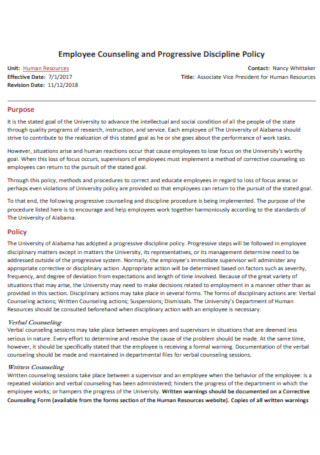
Employee Counseling and Progressive Discipline Policy
download now -
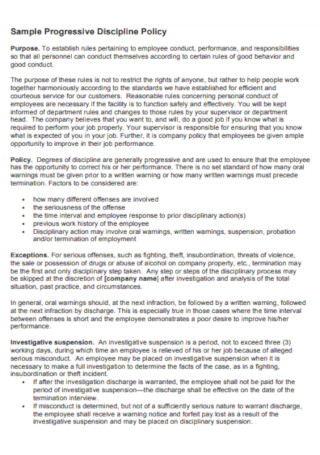
Sample Progressive Discipline Policy
download now -
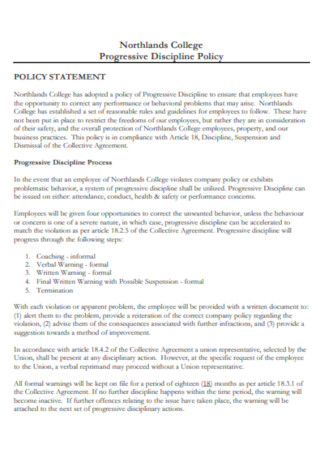
College Progressive Discipline Policy
download now -

Progressive Disciplinary Action Policy Template
download now -
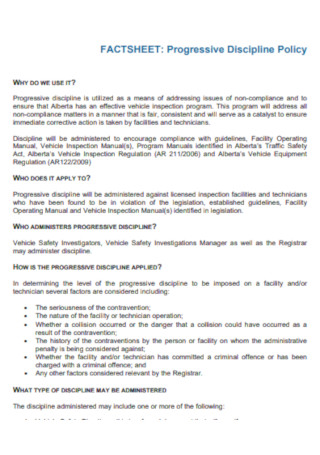
Progressive Discipline Policy Fact Sheet Template
download now -
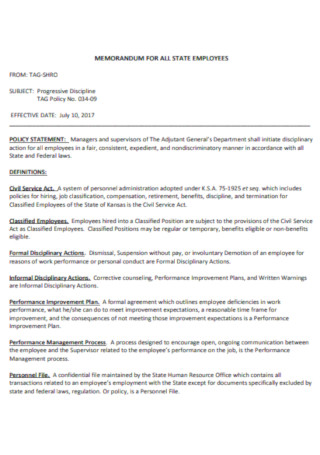
Memorandum for All State Employess Progressive Discipline Policy
download now -

School Board Progressive Discipline Policy
download now -
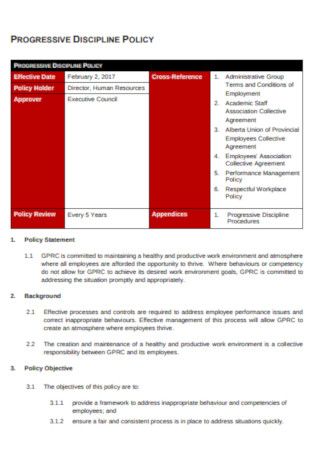
Simple Progressive Discipline Policy
download now -
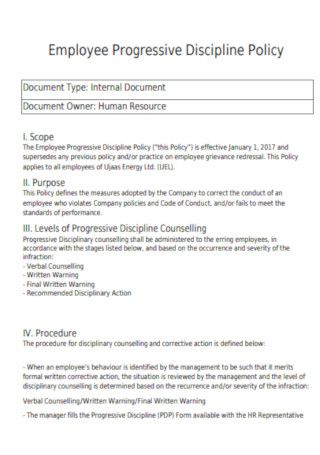
Sample Employee Progressive Discipline Policy
download now -
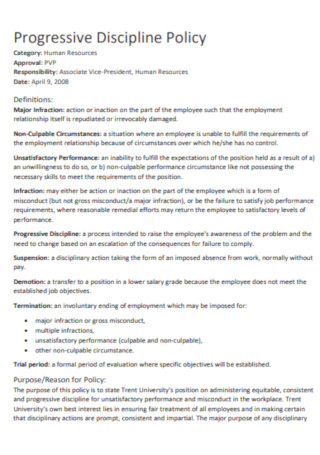
HR Progressive Discipline Policy
download now -
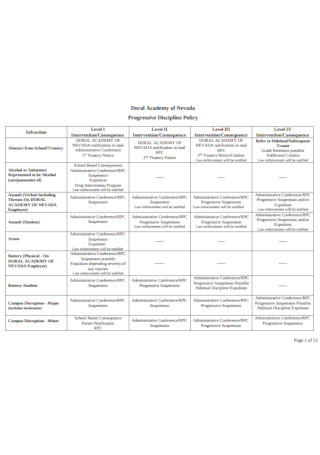
Academic Progressive Discipline Policy
download now -
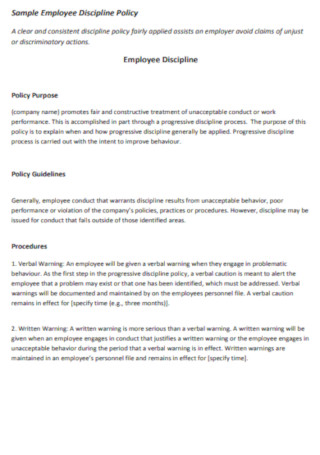
Sample Employee Discipline Policy Template
download now -
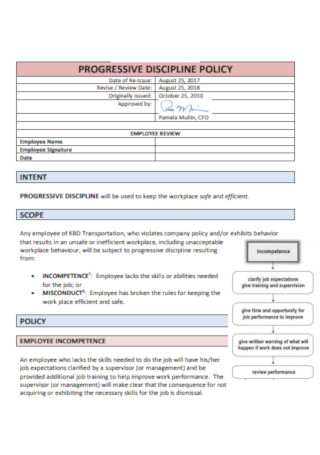
Formal Progressive Discipline Policy
download now -
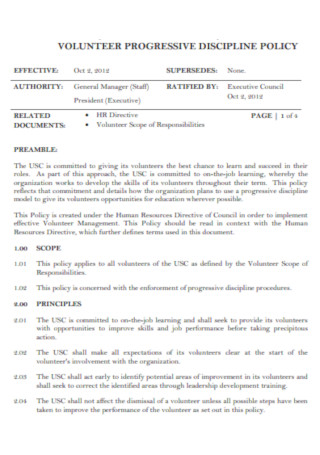
Volunteer_Progressive_Discipline_PolicyOct2012
download now -
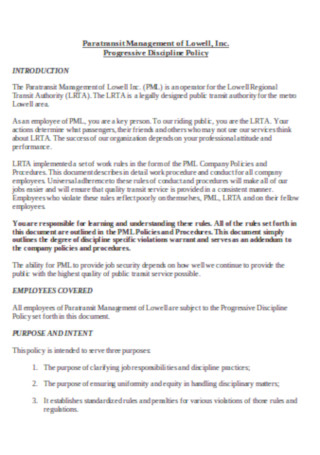
Progressive Discipline Management Policy
download now -
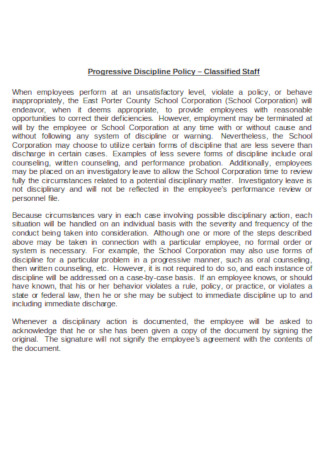
Staff Progressive Discipline Policy
download now
FREE Progressive Discipline Policy s to Download
What Is a Progressive Discipline Policy?
19+ Sample Progressive Discipline Policy Format, Template in PDF, Word
Progressive Discipline Policy
The Benefits of Implementing a Progressive Discipline Policy
How to Write a Progressive Discipline Policy
The Dos and Don’ts of the Progressive Discipline Policy
What Is a Progressive Discipline Policy?
A progressive discipline policy is the name of a specific process created with the purpose of dealing with any misconduct or misbehavior that takes place within the confines of a workplace. One can easily make the claim that its truest purpose is to ultimately aid your employee in understanding what it is that they are doing wrong and to help put them on the path towards improvement. There are many people who see this more as a means of punishment, but the truth behind progressive disciplinary policies are the formal efforts that involve feedback, coaching, and documenting.
According to The Balance Careers, the kind of employees that are exposed to this the most would be non-exempt ones and hourly workers. You cannot expect certain employees, such as the exempt or salaried ones, for example, to go beyond the part where they are given written warnings. To go beyond that may inspire them to either work on themselves to improve or find new employment elsewhere. As the employer, remember that it is your responsibility to properly oversee how your staff is doing. Failing to take action against those who repeatedly cause trouble or under-perform can lead to a loss of morale for those who actually are contributing well to your company’s goals.
19+ Sample Progressive Discipline Policy Format, Template in PDF, Word
The Benefits of Implementing a Progressive Discipline Policy
You may be wondering why there would be a need to come up and implement a progressive discipline policy. Although some may argue against it, the fact that many benefits are reaped from this kind of policy is undeniable. Below is a short list that specifies each benefit, along with a brief description for each one.
How to Write a Progressive Discipline Policy
Writing a progressive discipline policy does not have to be difficult or even overly complex. There are steps that you can take to help you do this slowly and surely. With that said, take a look at what’s been written below and finally cross the creation of this policy off your to do list and checklist.
Step 1: Define the Policy
The beginning should involve the definition of your company’s progressive disciplinary policy. By doing this, you can explain what it is and what it is for, clearing up any potential misunderstandings ahead of time. This is also the foundation upon which you build the rest of the policy’s specific details, which are going to be far more intricate and complicated.
Step 2: Write the Specific Guidelines
When coming up with the guidelines, take care to organize your ideas in a step by step manner. This goes well with the concept of progressive discipline since it will outline what happens with each passing misconduct. A side note here would have to be how many steps your company will take. Smaller businesses may find it necessary to have multiple while bigger companies will face less challenges in imposing their policy if it had less steps to be concerned with.
Step 3: Write the Sanctions to be Imposed
This is where the progression is going to take place. Start things off with a small sanction, such as a verbal warning, for example. That is a sanction that most people will be able to agree with, although that specific example will not be appropriate for more serious offenses. From there, you can describe that the next logical step would be written warnings and then suspensions before finally stating that termination is the last and most severe form of disciplinary action to be taken. There may be some that will skip the suspension sanction or place an alternative sanction in its place, but that will be a decision to be made under the discretion of the business owner.
Step 4: Specify the List of Workplace Misconduct
Perhaps the most important and intricate part of the process, this is the part where every possible misconduct, misdemeanor, and infraction of company policy is listed down and in detail. To make it easier, it is highly recommendable that you divide them into different categories. The categories in question may differ according to the scale of the misconduct, the type of misconduct, and more.
Step 5: Review Your Policy
Before deciding that you are finished, take some time away from the policy after writing. A break will refresh your perspective, allowing you to review it at a later date with greater clarity. Look over its contents not just to try and identify any mishaps you might have made, but whether or not it is already good enough. Do not be upset or discouraged if you decide that it needs more work. Keep revising your progressive discipline policy until you are completely satisfied. After all, there’s always a chance that you will add or remove certain parts of it anyway as the years pass and your company evolves.
Step 6: Distribute it to Your Employees
The last step that needs to be taken would be to distribute this policy in such a way that all of your employees will be made aware of it. One way would be to include it in your employee handbook. Meetings can also be conducted to further explain and discuss the progressive discipline policy at length. For any new hires coming in, an in-depth introduction to this policy must be absolutely necessary so that they can be informed from the get-go regarding what kind of behavior is expected from them.
The Dos and Don’ts of the Progressive Discipline Policy
To better develop and implement progressive discipline within the workplace, it is often a good idea to look beyond the official steps and into more ‘outside the box’ concepts. Remember that there will always be certain pitfalls to avoid when introducing any kind of policy. Learning about those pitfalls, in addition to any tips that can take your progressive discipline to the next level, is what the following list is all about. Take a look at the dos and don’ts to see just what else you need to do in order to succeed in the way that you want to.
Dos
Do make sure that your established rules are clear as day.
A precursor to having to discipline misbehaving and rule-breaking employees is making sure that your own rules are clear and well established. If they aren’t, then it is plausible that the vagueness of your rules have directly contributed to your employees’ actions. After all, how can you expect anyone to behave in a way that’s acceptable to you if they aren’t even clear on what’s acceptable in the first place? Be sure to explain the rules in a manner that anyone can understand so that you can remove the lack of clarity as a reason for employee misdemeanor.
Do make sure that managers are also held accountable.
Sometimes when people do not behave in the way that you want them to, it may be because they are being supervised or managed by less than competent figures of authority. Your managers have been placed in their positions for good reason and if they aren’t being held accountable for those under their watch, then you can’t expect anything good beyond a certain point. Communicate with your managers as much as necessary and ensure that they are performing well according to what is expected of them.
Do maintain professional reporting that is as consistent as possible.
Speaking of communication, one of the ways to be as effective as possible would be to remain consistent. With all that goes on in any kind of business or company, disparity in terms of knowledge can become a problem. Sometimes, things just fall into the cracks; certain events may go unreported or under-reported, actions may end up exaggerated or relayed in a way that’s not as accurate as it may seem. Emphasize the importance of consistent professional reporting among your staff so that the information gap between all of you is bridged properly.
Do be diligent in recording infractions.
Related to the practice of consistent professional reporting would be the recording of infractions as soon as they come to light. This is the only way for you to be made aware of anything negative going on with your employees and the sooner you learn about these happenings, the sooner you can do something about it. For example, an employee that is habitually late or constantly under-performing must be monitored closely so that not only would the discipline progress in an acceptable way, but the root of his or her problem can also be addressed before it worsens some more.
Don’ts
Do not automatically assume that your employees know all the rules by heart.
This first ‘don’t’ is related to the first ‘do’ on the list. Besides making sure that all of your rules are clear enough to be understood, it is also safer and smarter to make sure everybody is aware of them in the first place. Where business owners fail is when they make an automatic assumption that their employees are already knowledgeable. To rectify this mistake, an introduction to the rules and regulations must always be a part of a new hire’s onboarding process. Go over every possible infraction along with the consequences.
Do not allow individual management styles to get in the way.
What comes next is a warning to better monitor your managers as well. Related to the tip above to hold them accountable, one of the things to look out for would be individual management styles that may end up doing more harm than good in terms of employee behavior. Some managers may be more lenient than others, or perhaps some find it in their best interest not to report infractions as needed. Whatever the reasons may be, these types of management styles will not do and must be reigned in to improve any behavioral issues shown by the more troubled members of your staff.
Do not fall victim to favoritism.
There can be times when an employee catches your eye and turns into one of your favorites. Despite that happening, you cannot allow your personal feelings to get in the way of implementing progressive discipline in the event your favorites mess up. Like the example mentioned above, it can be tempting to be a bit lenient with others, but that would only send a bad message to the rest of your company. Be professional, show no bias towards any employee, and be sure to manage whatever positive impressions you have regarding any given individual to make sure it is not disruptive towards company policy.
Do not prematurely assume when grievances are over.
When settling a conflict between employees, it is never smart to assume that everything has gone according to how you wanted it to go. There’s always the possibility that more conflict will arise or that the case has only settled partially. A progressive disciplinary policy and all of its documentation and procedures can help you keep track of everything, at least as much as possible. That way, you can be prepared to handle more of the conflict in the event that it reignites at a later date.
There you have it. Progressive discipline is definitely not easy, but your human resource department will be much better for it when you got this thing down in the right way. You will have less employees at risk of dismissal, offenses will be corrected rather than punished, and the best part is that you don’t even need to start from scratch. A progressive discipline policy form template is easy to find and all you have to do is make the necessary edits before printing it out and distributing it for your employees to see.
